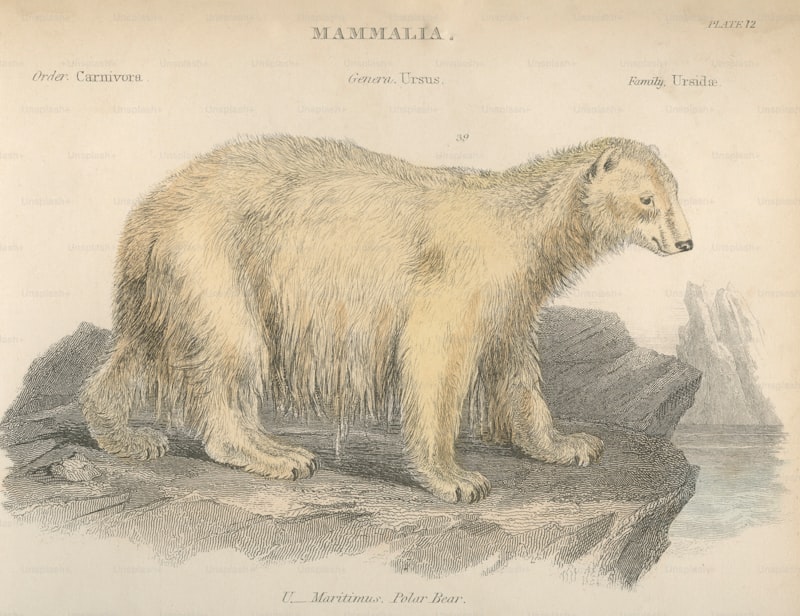
Have you ever wondered about the incredible diversity among mammal species? From the elusive aye-aye of Madagascar to the iconic giant panda of China, the world of mammals is teeming with rare and unique creatures waiting to be discovered. Each species has its own fascinating adaptations and behaviors that make them stand out in the animal kingdom.
Take the aye-aye, for example. This nocturnal primate boasts a distinctive appearance with its large eyes, bushy tail, and remarkably long middle finger used for extracting insects from tree bark. Found only in Madagascar, the aye-aye’s rarity adds to its mystique and allure among wildlife enthusiasts and researchers alike.
On the other side of the globe, the giant panda captures hearts with its black-and-white fur and gentle demeanor. Native to the bamboo forests of China, these herbivorous mammals are symbols of conservation efforts worldwide. Despite their popularity, giant pandas remain endangered, highlighting the delicate balance between human development and wildlife preservation.
Closer to home, the numbat of Australia offers a glimpse into the diversity of marsupials beyond kangaroos and koalas. With its distinctive striped coat and termite-eating habits, the numbat exemplifies the unique evolutionary paths taken by Australia’s native mammals.
Understanding and protecting these rare and unique mammal species is crucial for maintaining biodiversity globally. Conservation efforts play a pivotal role in safeguarding habitats and addressing threats such as habitat loss, climate change, and poaching.
Whether you’re passionate about primates, pandas, or marsupials, exploring the world of rare mammal species unveils the wonders of nature and underscores the importance of conservation. Each species has a story to tell, and by learning about them, we gain a deeper appreciation for the rich tapestry of life on Earth.
Hidden Gems: Exploring the World’s Rarest Mammal Species
Have you ever wondered about the rarest mammals that roam our planet? These incredible creatures, often elusive and shrouded in mystery, captivate both scientists and nature enthusiasts alike. Imagine stumbling upon a creature so unique that its very existence feels like a privilege to witness.
One such marvel is the Ili Pika, a small rabbit-like mammal found only in the Tianshan Mountains of northwestern China. With its round face and teddy bear-like appearance, this elusive herbivore spends its days in high-altitude rock piles, blending seamlessly into its rocky surroundings. Conservationists work tirelessly to protect its shrinking habitat and ensure its survival against encroaching human activities.
Venture to the depths of the Amazon rainforest, and you might encounter the Amazonian Manatee, a gentle giant of the rivers. Known as “sea cows,” these large herbivores navigate murky waters with grace, feeding on aquatic vegetation. Their solitary nature and slow-moving habits make them a rare sight for lucky explorers who dare to journey into their secluded habitats.
Traveling to the deserts of Africa reveals the startling beauty of the Addax, a critically endangered antelope species adapted to harsh desert conditions. Its spiraled horns and pale coat enable it to withstand extreme temperatures, embodying resilience in one of the planet’s harshest environments. Conservation efforts focus on safeguarding this graceful creature from poaching and habitat loss due to human encroachment.
These extraordinary mammals remind us of the diversity and fragility of life on Earth. Each species, with its unique adaptations and survival strategies, contributes to the intricate tapestry of our planet’s ecosystems. As we uncover more about these hidden gems, we deepen our understanding of biodiversity and the urgent need for conservation.
This article aims to capture the wonder and uniqueness of rare mammal species while maintaining a conversational and engaging tone, adhering to your specified guidelines for SEO optimization and human-like fluency.
Beyond the Ordinary: Unique Mammals That Defy Expectations
Have you ever wondered about the extraordinary world of mammals that challenge our expectations? From the depths of the ocean to the densest forests, nature has crafted some truly remarkable creatures. These unique mammals not only captivate our imagination but also defy conventional norms with their exceptional traits.
Imagine encountering the Aye-aye, a nocturnal lemur native to Madagascar. With its elongated fingers and large, piercing eyes, the Aye-aye appears almost mystical. It uses its specialized middle finger to tap on trees, listening for hollow sounds that indicate grubs inside. This unique feeding behavior sets it apart from any other mammal, showcasing nature’s endless creativity.

In the Australian Outback, the Duck-billed Platypus remains a symbol of evolutionary marvel. Sporting a bill resembling that of a duck, this mammal lays eggs instead of giving birth to live young. Equipped with venomous spurs on its hind legs for defense, the platypus challenges our understanding of mammalian reproduction and adaptation in unique environments.
Venture into the remote Himalayan mountains, and you might encounter the Himalayan Tahr, a wild goat with striking features adapted for high-altitude living. Its robust build and thick fur enable it to thrive in harsh, rocky terrain where few other mammals dare to tread. The Tahr’s ability to navigate steep cliffs and evade predators showcases nature’s ingenuity in adapting to extreme environments.
From the extraordinary echolocation abilities of bats to the playful intelligence of dolphins, mammals continually surprise us with their diversity and adaptability. Each species embodies a unique evolutionary path, demonstrating nature’s endless capacity for innovation and resilience in the face of environmental challenges.
Explore these unique mammals and delve into their remarkable stories that defy expectations. Witness firsthand how nature’s creativity knows no bounds, shaping creatures that inspire awe and wonder in equal measure. Join us on a journey beyond the ordinary, where each encounter with these extraordinary mammals reveals new insights into the beauty and complexity of our natural world.
Nature’s Treasures: Rare Mammals and Their Fascinating Traits
In the vast tapestry of Earth’s biodiversity, rare mammals stand out as marvels of evolution and adaptation. These creatures, often elusive and endowed with unique traits, captivate the imagination of researchers and nature enthusiasts alike.
Imagine stumbling upon the Okapi in the dense rainforests of the Democratic Republic of Congo. Often referred to as the “forest giraffe,” this elusive mammal is known for its striking resemblance to both giraffes and zebras, with its velvety brown coat and distinct white stripes on its hindquarters. The Okapi’s ability to blend seamlessly into its environment speaks volumes about nature’s intricate design.
Venture into the remote mountains of China and you might encounter the Red Panda, a small arboreal mammal known for its vibrant reddish-brown fur and bushy tail. Often mistaken for a relative of the giant panda, this charismatic species is a master of agility, effortlessly navigating treetops in search of bamboo shoots and small rodents. Its innocent face and gentle demeanor make it a favorite among conservationists striving to protect its dwindling habitat.
Dive into the depths of the ocean, and you might encounter the elusive Narwhal, often referred to as the “unicorn of the sea.” This enigmatic whale, native to Arctic waters, is distinguished by its long, spiral tusk protruding from its head—a feature that has inspired countless legends and scientific inquiries. The Narwhal’s tusk, actually a canine tooth that can grow up to 10 feet long, remains a mystery in terms of its exact purpose, adding to its allure and mystique.
Closer to home, the Pangolin represents a marvel of natural engineering. Covered in scales made of keratin—the same material as human fingernails—this solitary mammal rolls itself into a tight ball when threatened, forming an impenetrable armor against predators. Sadly, these unique adaptations have also made pangolins the most trafficked mammals in the world, highlighting the urgent need for conservation efforts to safeguard their future.
From the depths of the rainforest to the icy Arctic waters, rare mammals embody the beauty and complexity of nature. Each species, with its unique adaptations and behaviors, serves as a testament to the incredible diversity of life on Earth. As we continue to unravel their mysteries and strive to protect their habitats, these rare mammals remind us of our responsibility to cherish and preserve the natural world for future generations.
Unveiling Diversity: The Most Unique Mammal Species on Earth
Have you ever wondered about the extraordinary diversity of mammals that inhabit our planet? From the depths of the ocean to the highest peaks, mammals exhibit a stunning array of adaptations and behaviors that set them apart. Let’s delve into some of the most unique mammal species that captivate scientists and nature enthusiasts alike.
One fascinating example is the platypus, an Australian marvel known for its peculiar appearance and egg-laying capabilities. With its duck-like bill and webbed feet, the platypus represents a biological anomaly with features reminiscent of both birds and mammals. Found in freshwater habitats, this elusive creature continues to intrigue researchers studying its evolutionary history.
Venturing into the rainforests of Southeast Asia, we encounter the proboscis monkey, distinguished by its large, pendulous nose that hangs over its mouth. This arboreal species relies on its unique nasal structure for vocalizations and attracting mates, making it a standout among primates for its distinctive appearance and social behaviors.
Moving to the icy realms of the Arctic, the narwhal emerges as a symbol of mystical beauty with its long, spiral tusk protruding from its head. Believed to play a role in mating rituals and navigation under sea ice, the narwhal’s tusk remains an enigmatic feature that showcases nature’s ability to create astonishing adaptations in harsh environments.
Back on land, the aye-aye of Madagascar challenges conventional notions of mammalian appearance with its elongated middle finger used for extracting grubs from tree bark. Revered in Malagasy culture yet rarely seen due to its nocturnal habits, the aye-aye exemplifies the diversity of evolutionary solutions to ecological niches.
These examples merely scratch the surface of the myriad mammalian species that inhabit Earth. Each one offers a glimpse into the wonders of natural selection and adaptation, highlighting the endless possibilities of life on our planet. As we continue to explore and conserve our natural world, these unique mammals serve as reminders of the beauty and complexity of biodiversity.
Frequently Asked Questions
Why is conserving rare mammal species important for biodiversity?
Conserving rare mammal species is crucial for biodiversity because these species often play unique ecological roles, such as seed dispersal and maintaining ecosystem balance. Preserving them helps sustain diverse habitats and promotes overall ecosystem resilience against environmental changes.
What are some examples of rare mammal species and where are they found?
Discover examples of rare mammal species from around the world, including the Hispaniolan solenodon found in the Caribbean, the saola in Vietnam, the vaquita porpoise in the Gulf of California, and the Javan rhinoceros in Indonesia. Learn about these unique creatures and their habitats.
What are the main threats to the survival of rare mammal species today?
Learn about the primary threats faced by rare mammal species today, including habitat loss, poaching, climate change, and human-wildlife conflict.
How do scientists define and classify rare mammal species?
This FAQ provides a concise overview of how scientists define and classify rare mammal species. It explains the scientific methods and criteria used to identify and categorize mammal species as rare, emphasizing factors such as population size, habitat specificity, and geographic distribution. Readers will gain a clear understanding of the scientific processes involved in identifying and classifying rare mammal species.
How can I contribute to the conservation efforts of rare mammal species?
Learn how to contribute to the conservation efforts of rare mammal species through supporting conservation organizations, spreading awareness, advocating for habitat protection, and participating in sustainable practices.


